The outcome of the Kanjal battle and the eternal consequences
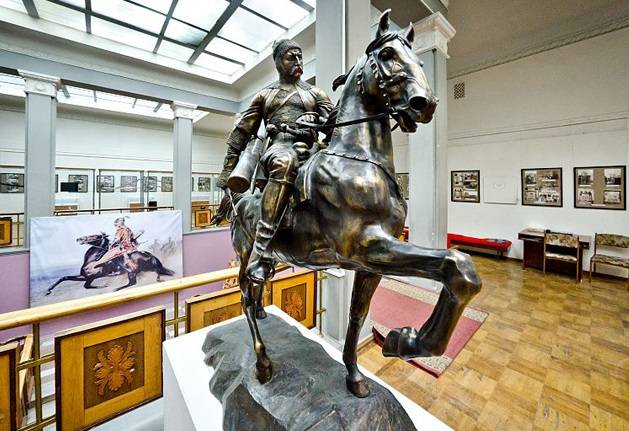
At the Kanzhal plateau, the troops of the Crimean Khan Kaplan I Giray suffered a crushing defeat. The khan himself only miraculously survived and fled from the scene of the battle, taking the remnants of the once mighty, but arrogant army. Kabardians rejoiced at the scene of the battle. For many years, the enemy, which over and over ruined their lands, was finally defeated. The dagger was littered with thousands of corpses. For several days, Kabardinians, exhausted by battle, wandered around the battlefield, looking for trophies and survivors, both their own and their enemies.
According to Shore Nogmov, they discovered Alegot Pasha, who, unconscious and desperate, fled from the battlefield and fell from a cliff. Halfway to death, Alegoth clung to a tree and ended up ending his days head down. Recent studies have shown that under the name Alegoth, the noble Nogai Murza Allaguvat was hiding.
Death statistics are scary, though vague
The concrete results of the battle in terms of dry statistics are no less vague than the battle itself. The participant of the battle Tatarhan Bekmurzin indicated the following data:
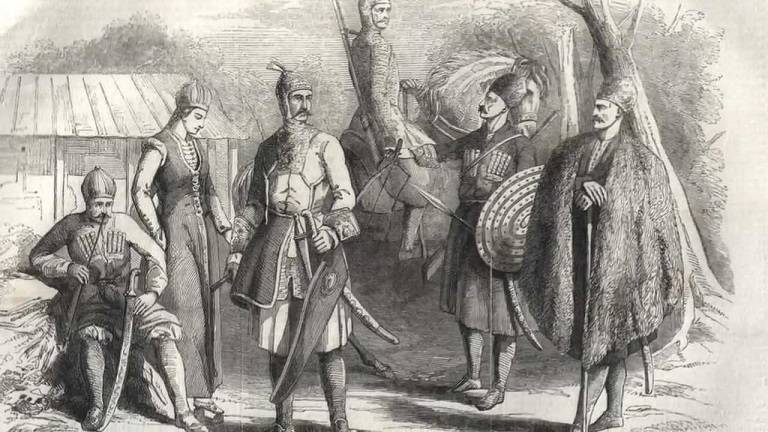
No less destructive consequences of the defeat of the Crimean Khan in Kabarda are described by a French traveler, writer, and at the same time an agent of the Swedish king Charles XII, who carefully watched the events on the southern borders of Russia:
The moon, which some Circassians adore and worship, revealed their enemies to them, and they chopped up so many people that only those who jumped on their horses and reached the steppe, clearing the battlefield of the Circassians, managed to escape. The Khan, who was at the head of the fugitives, left his brother, one son, his field tools, tents and luggage. ”
Kalmyk Khan Ayuk, who had close contacts with the Russians and met even with the boyar Boris Golitsyn and the governor of Astrakhan and Kazan, Lieutenant General Pyotr Saltykov, in a personal conversation with the Russian ambassador, said that in the battle the Kabardians killed up to hundreds of the best murza khan and captured Khan's son.
One way or another, but now the numbers of personnel losses directly vary from 10 thousand soldiers to 60 fantastic and even 100 thousand. The last figures are extremely unlikely, because the terrain itself could neither feed the cavalry with its pastures, nor place all the fighters.
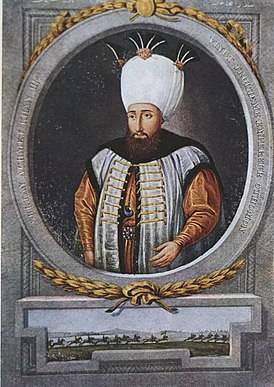
Soon news circled the Black Sea coast and reached Constantinople. Sultan Ahmed III was angry. He was preparing to enter the war with Russia and was in fact an ally of the Swedish king Charles XII, waging the Northern War. Naturally, after such a campaign, Kaplan I Giray, who fled from the battlefield, was immediately deposed. And the reason was not even that the campaign, which was to bring considerable benefits to the Crimean Khanate and Porte, was a failure. And not that the Kabardinians made money from Turkish gold and killed part of the army. The trouble for Constantinople and the vassal of Bakhchisarai was the fact that Kabarda did not just rebel, which was suppressed more than once, but showed that it could successfully defeat the Turkish-Tatar army. In addition, at least for the coming year, the Port lost a stream of slaves and slaves that enriched the Ottoman treasury.
Sensitivity of international politics
Naturally, the defeat that led to the immediate change of the khan, the son of Selim Girey, respected among the Crimean Tatars, could not but have serious geopolitical consequences. Just at the very time when Kaplan lost part of his army in Kabarda, the Ottoman Empire and the Crimean Khanate were already negotiating with the Swedes about the time of entry into the war. Such a contradictory union of the Christian king with the Crimean Khan and the Ottoman Sultan should not confuse anyone. Porta and the Crimean Khanate have always been extremely sensitive to the possibility of striking at Russia.
For example, back in the 90s of the 16th century, the Crimean Khan of Gaza II Giray, with the knowledge of the Ottoman "authorities", was in full contact with the Swedish king Sigismund I, and later, assuring the Russian tsars of friendship, invaded Russian lands with devastating raids. The “friendship” did not weaken even later, when Khan Dzhanibek Girey supported Poland in the Smolensk War. True, the same Swedish Sigismund I, who ruled under the name of Sigismund III, was then sitting on the throne of Poland.
However, even in 1942, when Germany destroyed people in the camps and was eager for Moscow, Turkey did its utmost to help the Nazis, including in the transfer of saboteurs and spies across the border. In addition, the Turks concentrated over 20 divisions on the border with the USSR, waiting for the arrival of the Allied Nazis or hoping to stab the Russians in the back.
With the beginning of the Northern War, Russia did its best to maintain peaceful relations with the Ottoman Empire, approved by the Treaty of Constantinople. It was clear to everyone that sooner or later the Port, of course, would strike from the south, but in order to postpone this moment, everything was possible. Count and Ambassador of Russia to Constantinople, Peter Andreevich Tolstoy, in order to prevent a war in the south, was forced to bribe the greedy Ottoman dignitaries-schemers. But the temptation to strike at Russia was still great. And for this they wanted to use the same Crimean Khanate.
As a result, a major defeat in the Battle of Kanzhal, depriving the Khanate of Kabarda, significantly reduced the fighting efficiency of the Ottoman Crimea. In addition, in that situation it was hard to expect that Bakhchisaray would be able to recruit the same number of Nogais and other tribes of the North Caucasus for a raid on Russia as before. As a result, the Battle of Kanzhal is considered one of the reasons why the Crimean Khanate, always ready to respond to the European campaign against Moscow, did not participate in the legendary Poltava.
Peter the Great also drew attention to the slaughter near Kanzhal. The Russian ambassadors began to penetrate into Kabarda, and a new stage in the interaction of Kabardins and Russians slowly began. These relations could even become a full-fledged entry of Kabarda into Russia, if not for the internal strife of the Kabardian princes and some external factors.
The brave Kurgoko Atazhukin died in 1709, surrounded by the glory and love of the people. Kurgoko simply did not have time to realize the potential of victory in the battle with the invaders to rally all the princes of Kabarda. As soon as he closed his eyes, a deep split among the Kabardinians had already begun to brew. By 1720, two parties were even formed: Baksan (the new prince-valiy of Kabarda Atajuko Misostov, princes Islam Misostov and Bamat Kurgokin) and Kashkhatauskaya (princes Aslanbek Kaitukin, Tatarkhan and Batoko Bekmurziny). The civil strife was so destructive that, in turn, the princes from both parties turned for help in the struggle to either Moscow or the Crimean Khanate.
Bloody Kanzhal ready to repeat?
In September 2008, in the Kabardino-Balkarian Republic, a group of Kabardinians, participants in the equestrian procession in honor of the 300th anniversary of the victory in the Battle of Kanzhal, headed towards Kanzhal. At night, in the area of the village of Zayukovo, several cars of residents of the village of Kendelen drove up to a group of riders. Kendelen is located at the entrance to the gorge of the Gundelen River, which is the "road" to Kanzhal. The Kendelenites shouted that "this is the land of Balkaria" and "get out on the Black Sea, in Zikhia." In the morning, the road to Kendelen was blocked by a crowd of people, according to the march participants, armed with armature and carbines. A couple of days lasted a confrontation with the involvement of republican persons and employees of the Ministry of Internal Affairs. As a result, the procession continued, but under guard.
The same situation arose in 2018, when the Kabardians again gathered to hold a memorable procession, now to the 310th anniversary of the Battle of Kanzhal. At the same village of Kendelen, they were blocked by local residents with placards "There was no Kanjal battle." Kabardinians from other parts of the republic began to gather at Kendelen. The confrontation was so heated that the arrived fighters of the Russian Guard were forced to use tear gas, there is also evidence of firing in the air.
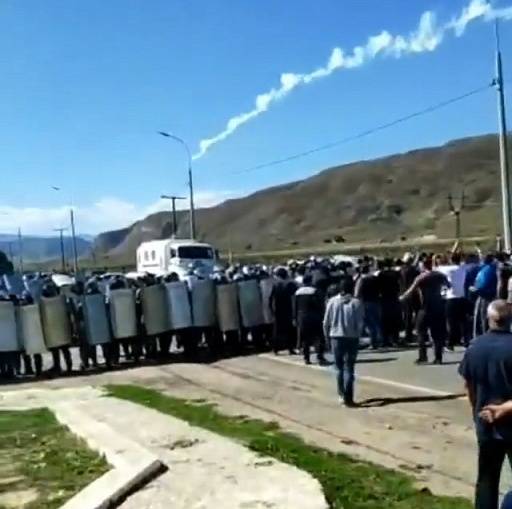
The causes of these conflicts, threatening to erupt in a serious ethnic flame, are extremely deep. Firstly, the Balkars, who make up almost 100% of the village of Kendelen, belong to the Turkic-speaking peoples, and the Kabardins - to the Abkhaz-Adyghe peoples. In addition, back in 1944, the Balkars underwent deportation, officially - for collaboration. And in 1957, the people were returned to their native lands, which, of course, led to a hot alteration of pastures and other disputes.
Secondly, before the accession of the North Caucasus to Russia, Kabardian influence on neighboring peoples and tribes was enormous, they levied tribute and considered even many Chechen and Ossetian societies as their vassals, etc. As a result, the most freedom-loving residents were forced to go higher into the mountains with their meager pastures and difficult climate. With the advent of the empire, the highlanders began to be relocated to the flat part, where they occupied lands that the Kabardians had considered their own for centuries, with all the ensuing consequences.
Thirdly, the Kanzhal battle, which plays a huge role for Kabardian self-identification and is a symbol of heroism and the struggle for independence, is perceived by the Balkars as a promising threat of land acquisition in the Kanzhal region in favor of exclusively Kabardians.
These long-standing grievances are extremely painful, therefore the prejudice of some Balkars in the fact that the Battle of Kanzhal was not at all growing. More moderate Balkars, however, believe that Kanzhal was only one of the battles in the framework of the feudal war. The former cite the lack of mention of the battle in Kabardian folklore. The latter argue their position by the fact that even some Circassians came out on the side of the Turkish-Tatar army, although similar situations were standard for that time. Even the conclusion of the Military Center is not capable of shaking these weak positions. stories IRI RAS, which, on the basis of an analysis of historical documents, came to the conclusion that the Battle of Kanzhal not only took place, but also "is of paramount importance in the national history of Kabardins, Balkars and Ossetians."
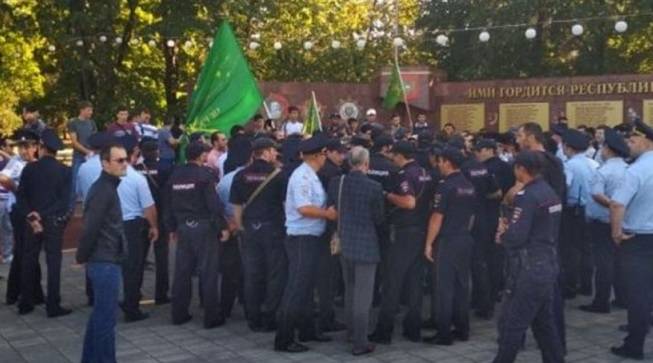
Such a tense situation is slowly overgrowing with characteristic ethnic claims. Increasingly, the Balkars are accusing them of "dominance of Kabardins in leading posts," historians who claim Kanzhal as an undeniably accomplished event receive threats. Kabardinians are not far behind. In September 2018, after another conflict near the village of Kendelen, the confrontation continued in the capital - Nalchik. Opposite the building of the government of the republic, about two hundred young people gathered, waving Circassian flags (not the flag of the republic!) And chanting: “Adygs, go ahead!”
The piquancy to the situation is given by the fact that Kabardinians have been struggling for a year to permit the installation of the monument to Kurgoko Atazhukin in Nalchik. At the same time, there is already a project of the monument, and the initiators themselves are proposing to take all the costs for installation on themselves. Hope for a positive solution to this issue is instilled by the fact that the memorial stone of the monument has already been laid, although the hope is weak, because the stone was laid 12 years ago.
The appearance of the necessary number of provocateurs on the part of our "peace-loving" neighbors to incite ethnic hatred is simply a matter of time.
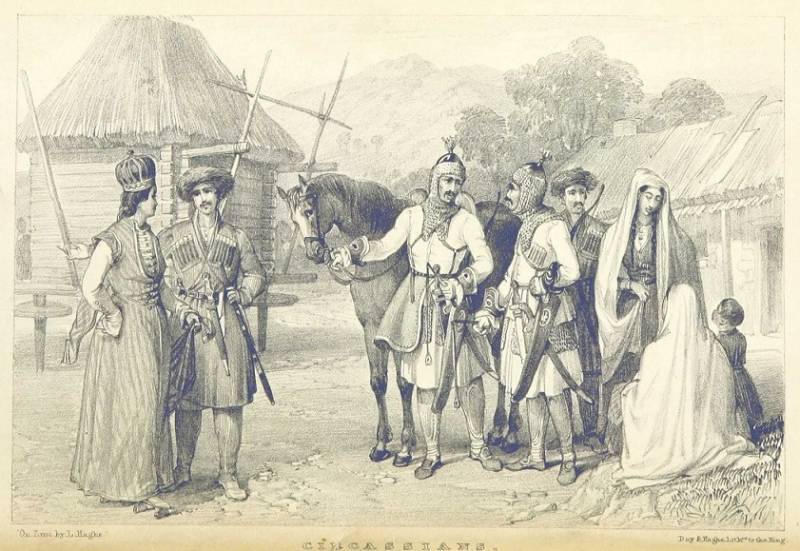
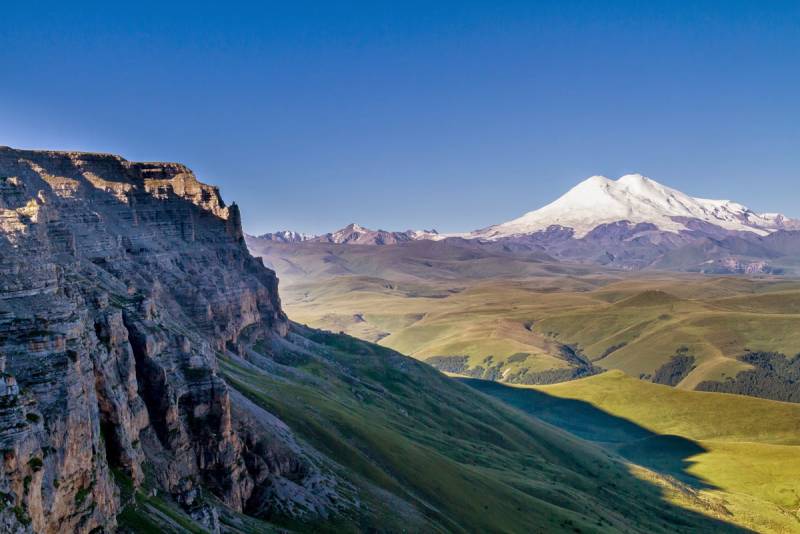
Information